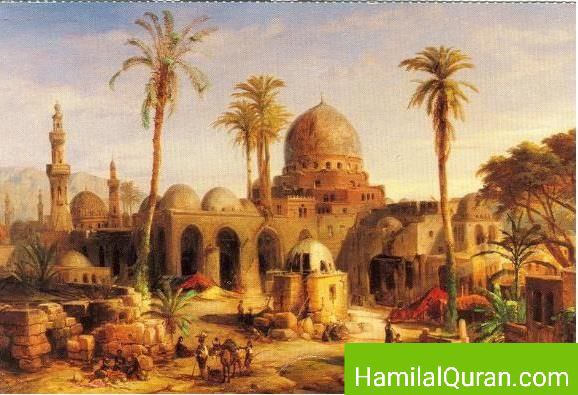The Holy Quran is the central religious text of Islam, and as such, it has had significant political and social influences throughout Islamic history and in the Muslim world today.
Politically, the Holy Quran has served as a source of guidance for Muslim rulers and governments. It outlines principles such as justice, equality, and accountability, which have influenced Muslim political thought and governance. The Holy Quran also contains guidance on the relationship between rulers and their subjects, emphasizing the importance of treating people with kindness and respect.
Socially, the Quran has profoundly impacted Muslim society, shaping beliefs and practices related to family life, ethics, and community. It promotes values such as compassion, generosity, and humility, and emphasizes the importance of good deeds and moral behavior. The Quran also contains guidance on issues such as marriage, inheritance, and the treatment of women, which have influenced Muslim social norms and customs.
In addition to its various impact on Muslim societies, the Holy Quran has also inspired social and political movements. Throughout history, Muslims have looked to the Quran for guidance in their struggles for justice and freedom, and the text has been used to support a wide range of political and social causes.
The Holy Quran has played an important role in shaping both political and social thought in the Muslim world, and its influence can be felt in a wide range of areas, from governance and law to culture and everyday life.

The political influences of the Quran
Table of Contents
ToggleThe political influences of the Quran are multifaceted and complex, and it has evolved over time in response to changing historical and social contexts. One important way in which the Quran has influenced politics is through its emphasis on justice and accountability. Muslim rulers and governments traditionally have been held to high standards of ethical behavior, and the Quran has been used to hold them accountable for their actions. For example, the concept of Shura, or consultation, which is mentioned in the Quran, has been used to justify democratic forms of governance in the Muslim world.
The Quran has also played a role in shaping Islamic law, or Sharia, which has had a significant impact on Muslim societies. Sharia is based on the Quran and the Sunnah (the sayings and actions of the Prophet Muhammad (PBUH) and it covers a wide range of topics, including family law, criminal law, and economic law. Shariah has been interpreted in different methods by different Muslim scholars and communities, leading to a diversity of legal practices and traditions across the Muslim world.

The social influences of the Quran
In terms of social influences, the Holy Quran has had a profound impact on Muslim beliefs and practices related to family life, ethics, and community. For example, the Holy Quran promotes the idea of the community of Muslim believers, which has played a central role in shaping Muslim identity and solidarity. The Holy Quran also emphasizes the importance of charity and social welfare, which has led to the development of a wide range of charitable institutions and practices in Muslim societies.
The Holy Quran has also been a source of guidance on issues related to gender and sexuality. While some interpretations of the Quran have been used to justify patriarchal social norms and practices, others have highlighted the importance of gender equality and the rights of women. For example, the Quran contains verses that emphasize the equal worth of men and women and that prohibit domestic violence and other forms of abuse.
The development of Islamic art and architecture
The Holy Quran has had a profound influence on the development of Islamic art and architecture, which are characterized by intricate geometric patterns, calligraphy, and a focus on the beauty of the natural world.
One way in which the Holy Quran has influenced Islamic art and architecture is through its emphasis on the unity and beauty of God’s creation. The Holy Quran contains numerous references to the natural world, and Islamic artists and architects have drawn on these themes to create works that reflect the beauty and harmony of the natural world. For example, Islamic art frequently features intricate patterns based on geometric shapes, which are seen as a reflection of the order and balance of the universe.
Another way in which the Holy Quran has influenced Islamic art and architecture is through its emphasis on the use of language as a means of expressing spiritual ideas. Islamic calligraphy, which is a form of decorative writing, has been used to adorn everything from religious texts to buildings and monuments. Islamic calligraphy is highly regarded as an art form, and it is often used to convey important spiritual messages. To learn more about Islam you can enroll in online Islamic courses for beginners with free trials offered by Hamil Al Quran Islamic online University Quran memorization and learning

Conclusion
Islamic art and architecture also have been influenced by the Quran’s emphasis on the importance of beauty and aesthetics. Islamic art often features ornate designs and intricate patterns, which are seen as a reflection of the beauty of Allah’s creation. Islamic architecture also places a strong emphasis on beauty and aesthetics, with buildings and monuments often featuring intricate decoration and ornamentation.
The Holy Quran has played a central role in shaping Islamic art and architecture, which are characterized by a focus on the beauty and harmony of the natural world, the use of language as a means of expressing spiritual ideas, and a strong emphasis on aesthetics and beauty. These themes continue to influence Islamic artistic and architectural traditions around the world today.
